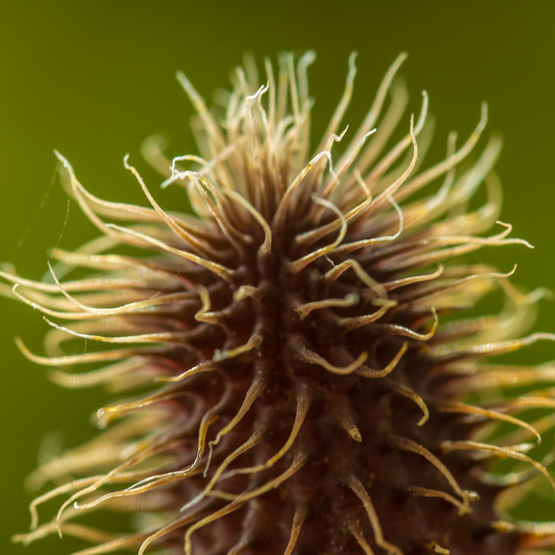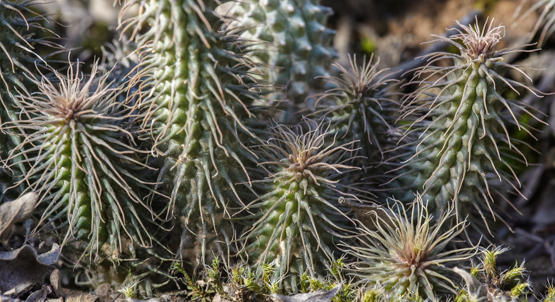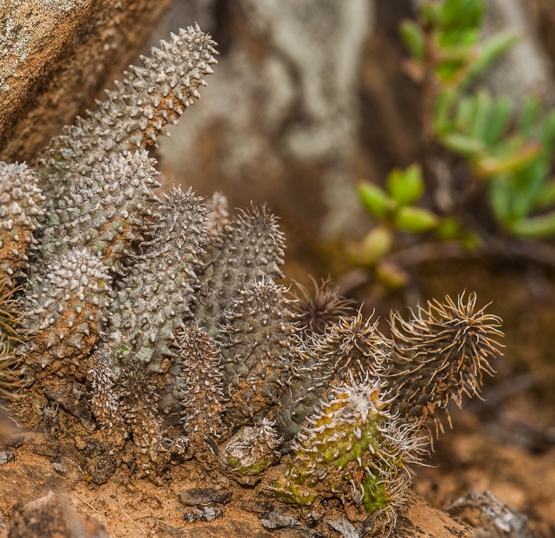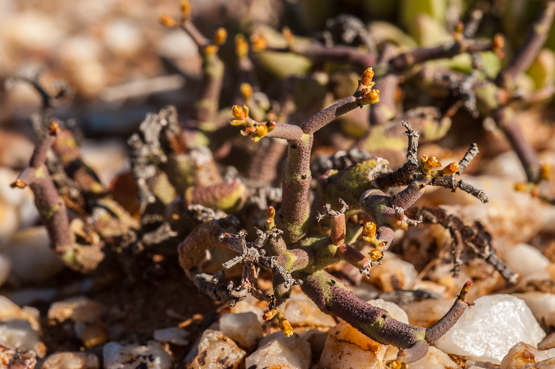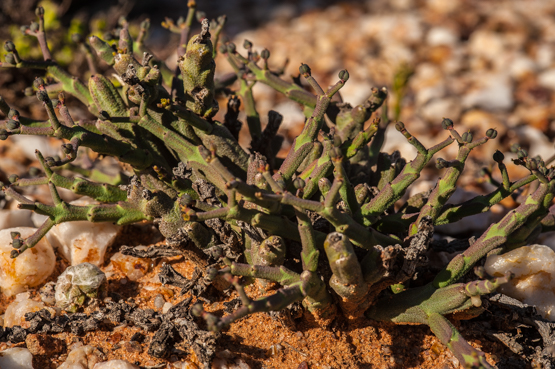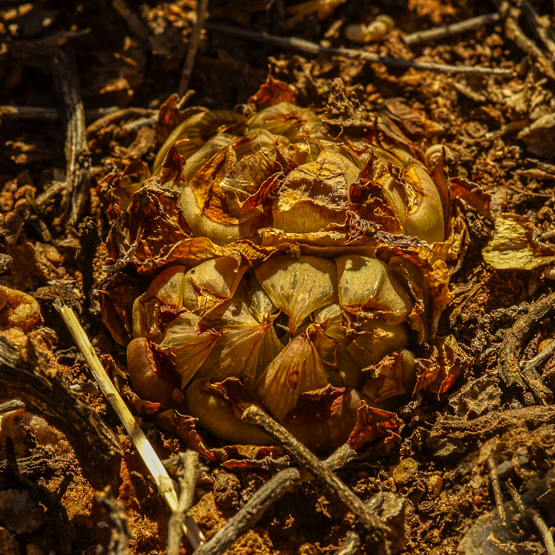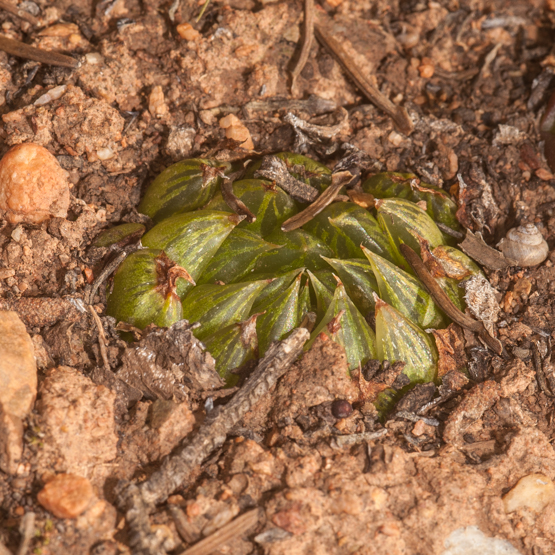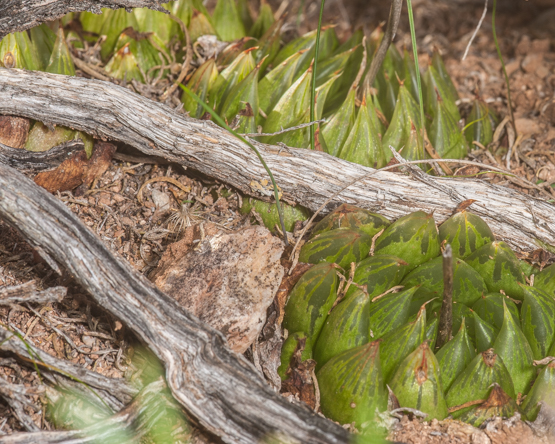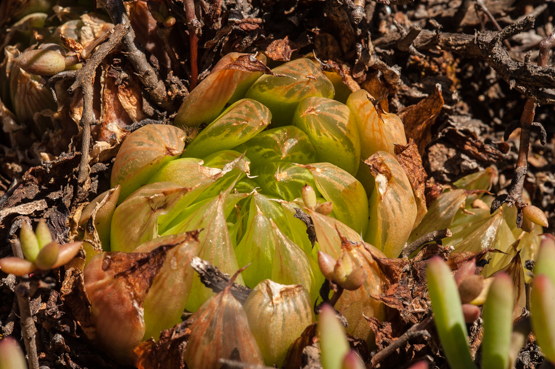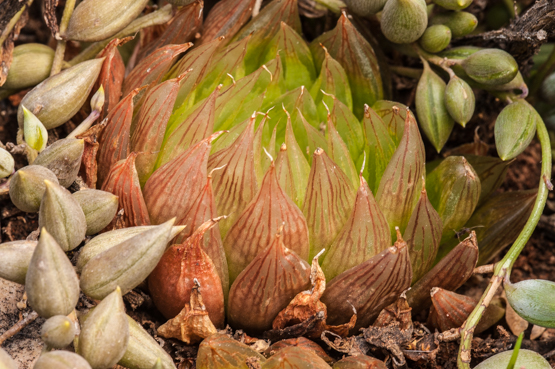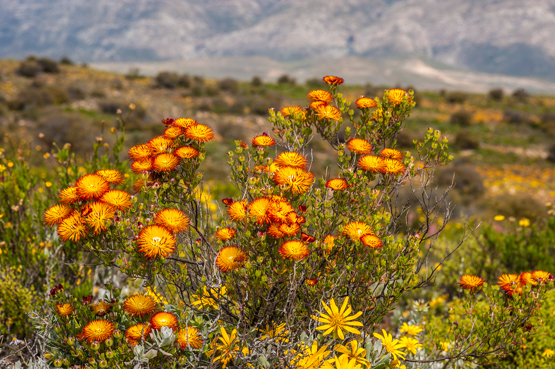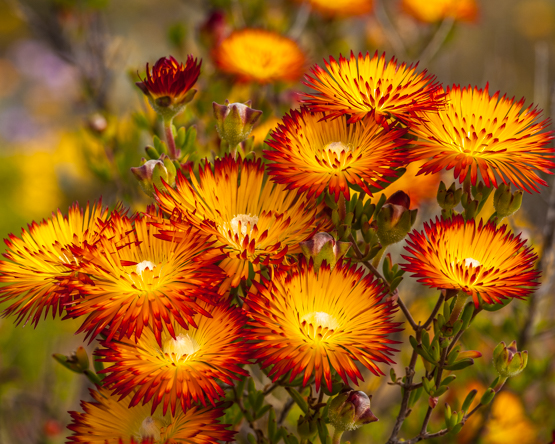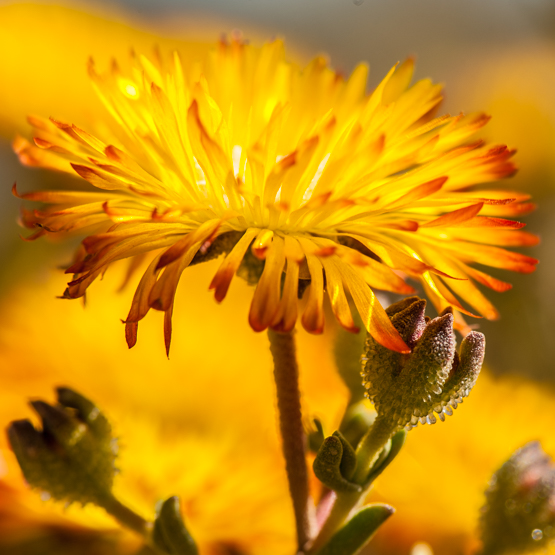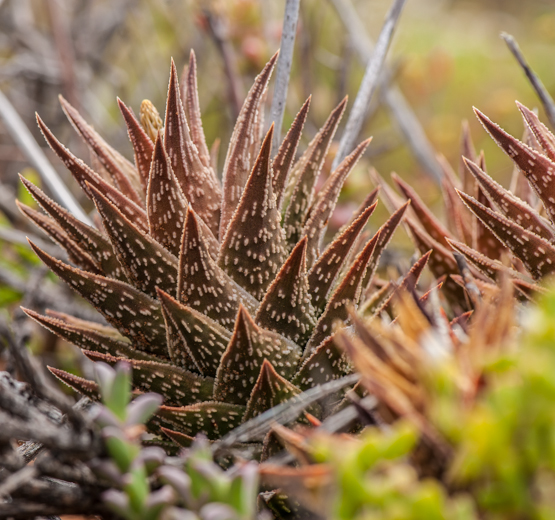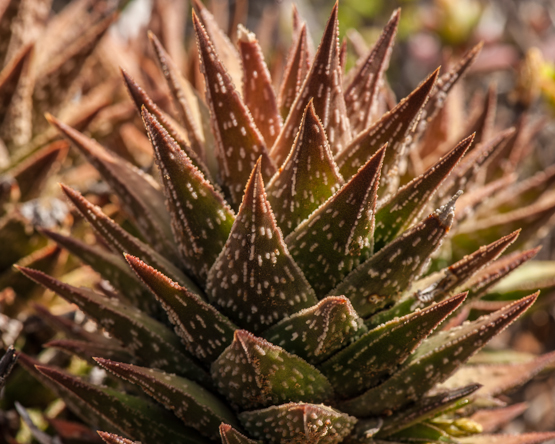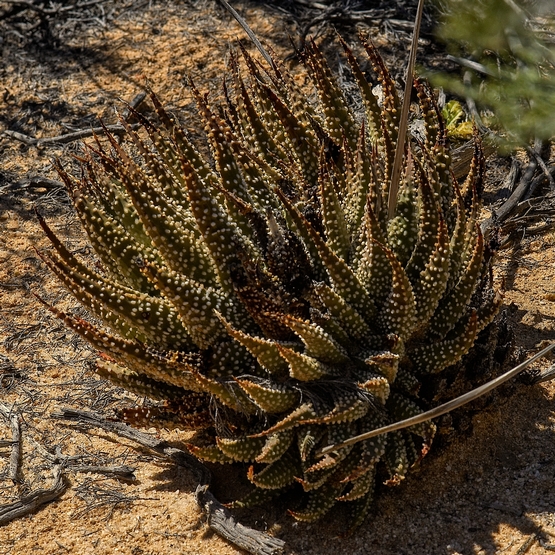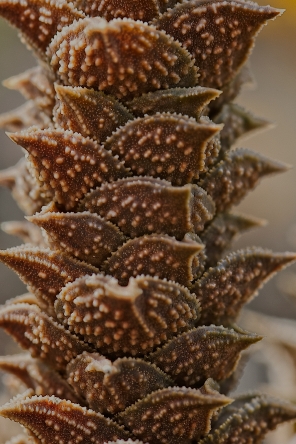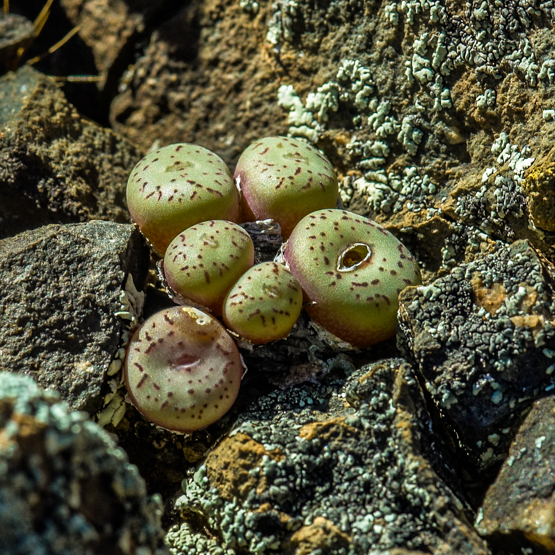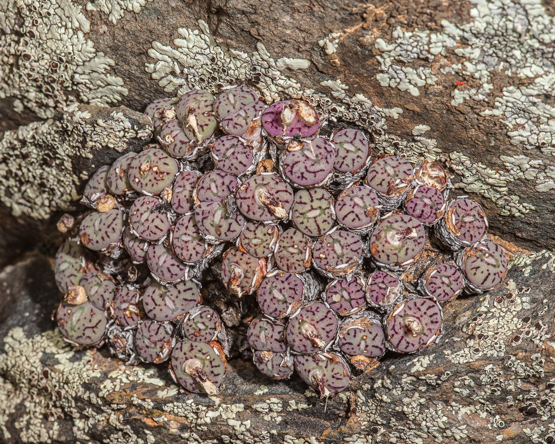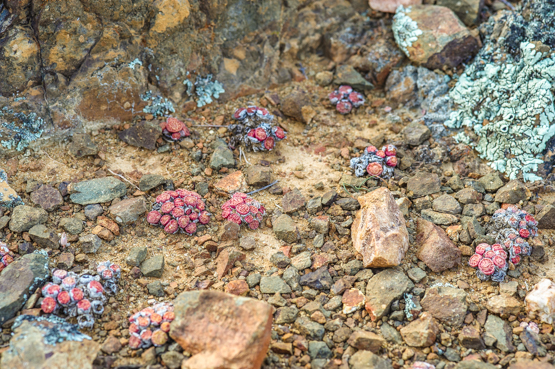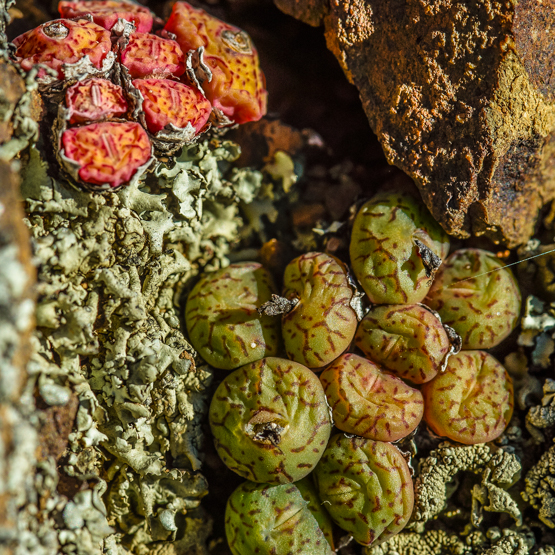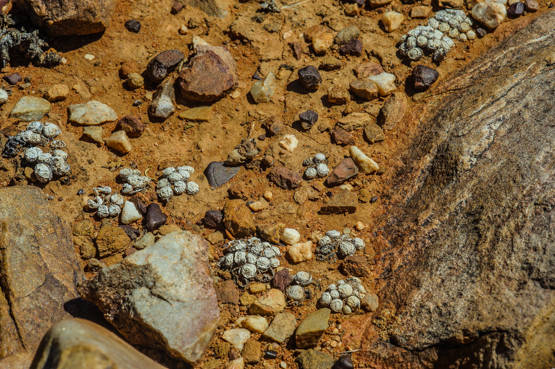Category: succulents
Huernia pillansii (part 1 of 2)
With its almost furry stems this species is easy to identify, even without flowers.
Only Stapelianthus pilosus from Madagascar is somewhat similar.
The stems are normally 1.5-6 cm long, but may reach as much as 18 cm; they usually have 10-16 spiral or vertical series of tubercles ending in long hairs. These hairs shade the stems and thereby reduce water loss.
The flowers have an unusual appearance too and appear in spring and summer (Dec.-May).
The plants are found sporadically on stony slopes and clayey flats from Montagu eastwards to Steytlerville in the Eastern Cape and in the Great Karoo from Matjiesfontein to Beaufort West. They occur mostly in the shade of low bushes.
Euphorbia muricata
E. muricata belongs to a group of spineless, shrubby Euphorbias which are often difficult to tell apart. This species however, is distinctive because of the rough surface of the branches.
The plants reach a height of up to 60 cm and occur from the Knersvlakte to Calvinia on gentle slopes and loamy flats.
Photos taken on the Knersvlakte 1 Sept. 2010.
Euphorbia muricata
E. muricata belongs to a group of spineless, shrubby Euphorbias which are often difficult to tell apart. This species however, is distinctive because of the rough surface of the branches.
The plants reach a height of up to 60 cm and occur from the Knersvlakte to Calvinia on gentle slopes and loamy flats.
Photos taken on the Knersvlakte 1 Sept. 2010.
Haworthia mucronata var. morrisiae
Drosanthemum bicolor
Drosanthemum bicolor
xAstroworthia bicarinata (Astroloba corrugata x Haworthia pumila)
A while ago, on a trip from Montagu to the southwest entrance of Anysberg Nature Reserve, friend Marion and I came across a couple of plants we had never seen before.
They grew in a flat area with low shrubs and other plants, including several specimens of Haworthia pumila.
It didn’t require a lot of brain power to assume that the unknown plants were hybrids, with H. pumila as one parent -almost certainly the mother. What the other parent might be remained guess work, because even after a long search in the area, we did not come across a likely candidate.
Last week I was looking up some information for a talk on succulents in the Montagu area that I was asked to give and that search solved the problem of the missing father.
In Haworthia revisited, Bruce Bayer states under H. pumila :”It hybridizes with Astroloba muricata (= A. corrugata, FN)”
In the Illustrated Handbook of Succulent Plants, N. L. Meyer & G. F. Smith mention the genus X Astroworthia with 1 member (xA. bicarinata), remarking: “This is the naturally occurring hybrid Astroloba corrugata x Haworthia margaretifera (= H. pumila, FN)”
The pictures below show the proud parents:
H. pumila and A. corrugata resp.
xAstroworthia bicarinata (Astroloba corrugata x Haworthia pumila)
A while ago, on a trip from Montagu to the southwest entrance of Anysberg Nature Reserve, friend Marion and I came across a couple of plants we had never seen before.
They grew in a flat area with low shrubs and other plants, including several specimens of Haworthia pumila.
It didn’t require a lot of brain power to assume that the unknown plants were hybrids, with H. pumila as one parent -almost certainly the mother. What the other parent might be remained guess work, because even after a long search in the area, we did not come across a likely candidate.
Last week I was looking up some information for a talk on succulents in the Montagu area that I was asked to give and that search solved the problem of the missing father.
In Haworthia revisited, Bruce Bayer states under H. pumila :”It hybridizes with Astroloba muricata (= A. corrugata, FN)”
In the Illustrated Handbook of Succulent Plants, N. L. Meyer & G. F. Smith mention the genus X Astroworthia with 1 member (xA. bicarinata), remarking: “This is the naturally occurring hybrid Astroloba corrugata x Haworthia margaretifera (= H. pumila, FN)”
The pictures below show the proud parents:
H. pumila and A. corrugata resp.


